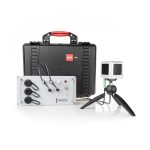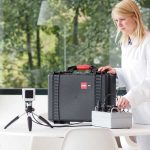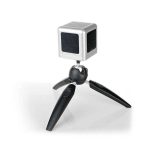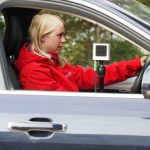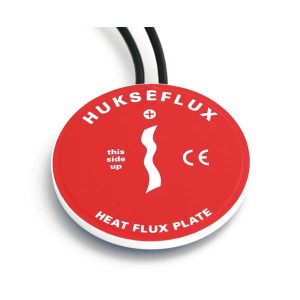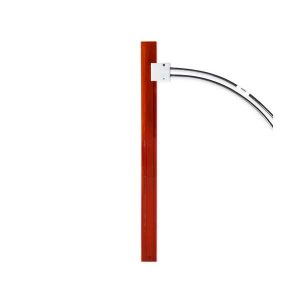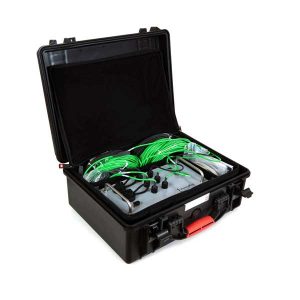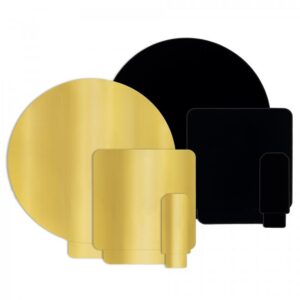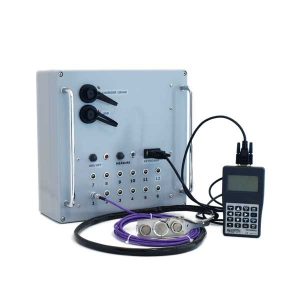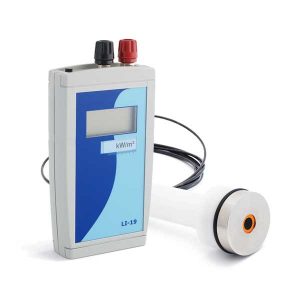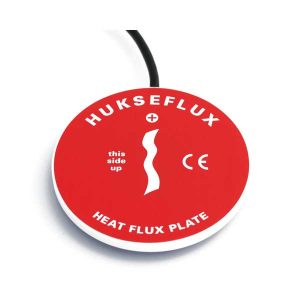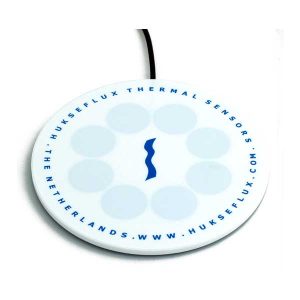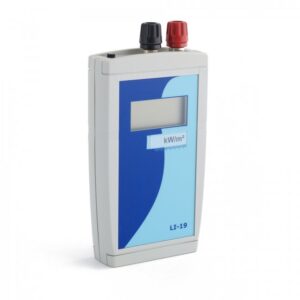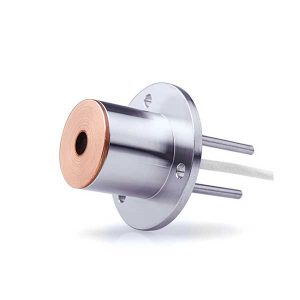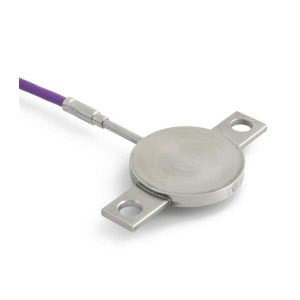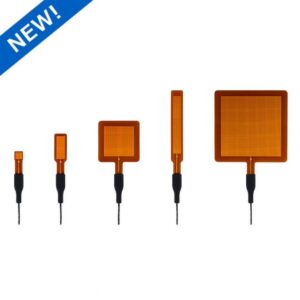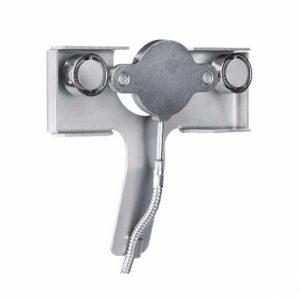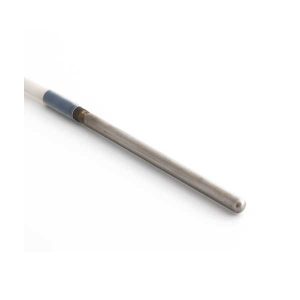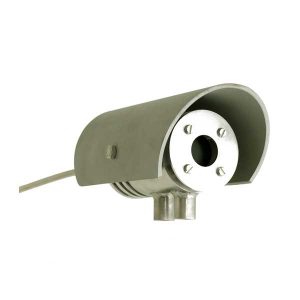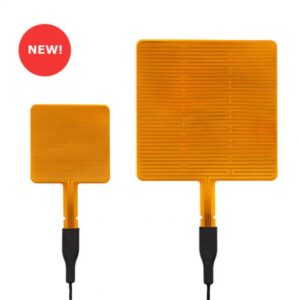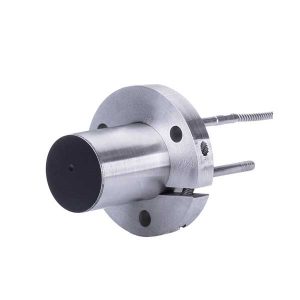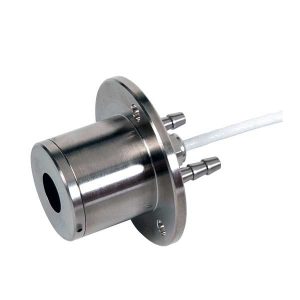Description
 |
IntroductionTCOMSYS01 was originally designed to study the effect of radiation sources on human comfort. Equipped with heat flux sensors that measure in 5 directions and a humidity and temperature probe, it offers a good picture of energy gains and losses from all sides to a metal body that thermally resembles the human body; the TCOM01 sensor is in essence a miniature thermal mannequin. |
 |
The TCOMSYS01 system employs dedicated sensors and electronics, measuring thermal comfort according to the new Hot Cube method. The high accuracy of the MCU (Measurement and Control Unit) ensures that TCOMSYS01 will still measure down to very low heat fluxes. The MCU has a robust aluminium housing. The system generates a measurement file, including a time-stamp. The measurement data are stored in the MCU and are later downloaded to a PC. The user is responsible for data analysis. |
 |
How to employ TCOMSYS01The primary source of information from TCOMSYS01 simply is the power [W] required to keep the TC0M01 sensor at a constant temperature; a very direct measure of human comfort. This power may be compared to the power required at 20 °C ambient air temperature, no convection (zero wind speed) and no radiation. Power consumption will immediately show if there is a situation of overheating or heatstress or a situation of overcooling or coldstress. The second direct information supplied by the heat flux sensors of TCOMSYS01 is the heat loss or gain [W/m2] as a function of direction. If radiative sources are dominant, TCOMSYS01 will measure radiative asymmetry. To study the exact effect of radiative sources, in many cases a simple experiment, like switching a radiation source [on] and [off] or shielding a radiation source, can be used to distinguish between convective and radiative heat transport. Far-infra red radiation sources may be studied by temporary shielding with silicon wafer. Silicon has around 50 % transmission. Radiation from the sun or lamps may be quantified by shading and unshading. To study the insulating effect of clothing, TCOM01 may be insulated using the same fabrics. A web browser may be used for real time measurement review, data collection and for changing control settings such as TCOM01 body temperature. |
 |
HistoryAlready in 1929 the Eupatheoscope (from Greek “wellbeing–emotion–examination”) was designed by A.F. Dufton to quantify the condition in a room from the point of view of comfort. It consists of a blackened cylinder which is controlled to maintain a temperature of 23 °C. The power used is interpreted in terms of equivalent temperatures. In the 1990 the company Bruel & Kjear carried a thermal comfort meter (model 1212), based on the same principle, and in addition processing Fangers equation. Both models involved only an integrated power measurement. The new Hot Cube method improves on this by incorporating omnidirectional heat flux measurements. |
 |
What makes TCOMSYS01 different?The main contributors to thermal comfort are air temperature, air speed, radiant temperature and humidity. Apart from this, there are personal contributors such as metabolic rate and insulation by clothing. Many studies use Fanger’s thermal comfort equation as applied in EN ISO 7730: Moderate Thermal Environments – Determination of the PMV and PPD indices and specification of the condition for thermal comfort. Another approach utilises a globe temperature measurement: EN ISO 27243: Hot environments. Estimation of the heat stress on working man, based on the WBGT Index (Wet Bulb Globe Temperature). These methods are quite indirect in particular when determining the heat flow from air speed and radiation.
|
 |
Rated operating conditionsTCOMSYS01 is designed to work between +10 and +25 °C. In its standard configuration, uninsulated and stabilised at 33 °C, it is rated for operation in indoor conditions including significant radiative heating. It will stabilise at 33 °C under approximately one of the following conditions:
Under other conditions, the sensor may not be able to stabilise its body temperature due to overheating (indicating overheating or heatstress) or shortage of electrical power (indication of overcooling or coldstress). Powered using a low voltage, TCOMSYS01 is safe to use. TCOMSYS01 may be used for short-term outdoor experiments in the order of weeks. Under long-term exposure to solar radiation, the black heat flux sensor coating may become more reflective. |
 |
User interface: MCU is a web serverThe MCU serves as a web server, and can be connected to any local area network. No more downloading of USB drivers and special interface software! Alternatively it offers an “Ethernet over USB” or virtual Ethernet link, where you connect to the MCU using a USB cable. If you type into your web browser the MCU’s IP address (192.168.66.1 by default), you have access to the user interface. |
 |
Ordering the TCOM01 sensor onlyThe sensor TCOM01 is also available as a “sensor only”; The configuration then includes the mannequin with 5 x heat flux, 1 x temperature, 1 x heater, 2 x cable, 2 x chassis connector and 1 x tripod. The user then must combine it with his or her own measurement and control unit. |






